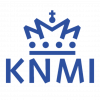Aeolus Follow-on Configurations
The ESA Earth Explorer mission Aeolus partly fulfills the well-expressed need for wind profile observations to initialize Numerical Weather Prediction (NWP) models. Aeolus has proven beneficial in particular over regions void of wind profile observations in the troposphere and lower stratosphere, particularly over the oceans, tropics and southern hemisphere. Although successful, Aeolus only partly fills the data gap following the requirements on data coverage, data quality and timeliness. These requirements are generally well captured by the World Meteorological Organization (WMO) Observing Systems Capability Analysis and Review (OSCAR) and Rolling Requirements Review (RRR).
With the success of Aeolus the moment has come to look forward to future vertical wind profiling capability to fulfil the rolling requirements in operational meteorology. Already in 2005 ESA initiated a study on potential Aeolus follow-on missions. Options studied included an Aeolus type instrument, but measuring profiles of the complete wind vector, rather than a single wind component like Aeolus. In addition, the benefits of a constellation of a number of Aeolus instruments was studied. It was shown that given a fixed number of observations doubling the coverage of single wind components, through the positioning of two Aeolus satellites in the same orbit, is more beneficial for NWP than a single satellite measuring the complete wind vector. A third Aeolus-type satellite in the same orbit further adds to NWP, although first indications of impact saturation emerged when distributing more satellites in the same sun-synchronous orbit.
This paper provides an overview of the methodology used to assess the potential impact of Aeolus follow-on missions and first conclusions on optimal wind profile sampling for NWP in the context of the WMO RRR.






